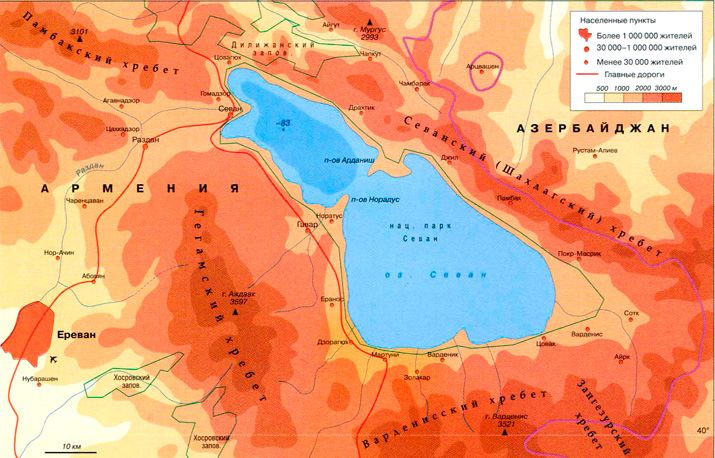The project, aimed at the reconstruction of climate and environment in the last Millennium, has received support From the Russian Foundation for basic research.
Sevan is one of the largest and most beautiful lakes in the Caucasus (according to the latest data, its area is about 1240 km2, which is about 1/10 of the total area of Armenia). This natural wonder is located in the huge Sevan basin at an altitude of 1916 meters above sea level and is surrounded by Gegham mountains. According to one hypothesis, it is volcanic processes in these mountains led to the emergence of the lake. And there are still many issues related to the distant past of lake Sevan. The scientists of the priority direction of “Ekoneft” of CFU together with colleagues from Yerevan state University will try to find answers to some of them in the near future. A bilateral project on integrated study of the lake and the surrounding area has received support from the Russian Foundation for basic research. Within its framework, it is planned to reconstruct changes in the environment around the lake over the past Millennium.
“As part of the project, we will organize an expedition to Sevan, where we plan to conduct a number of seismic surveys and select core columns for laboratory studies. At the second stage, we will examine these columns in detail in our laboratories. And already on the basis of the obtained data we will try to restore such parameters of environmental changes as paleoclimate, hydrological regime of nutrition, paleoseismicity and other catastrophic processes that have survived the lake over the past Millennium”, – told us one of the executors of the project Junior researcher of “Paleoclimatology, paleoecology and paleomagnetism” OpenLab Dilyara Kuzina.
It is important to note that the project is interdisciplinary in nature – in the course of the work will be applied a range of studies, including paleobiological, petromagnetic, geochemical and even isotopic methods. That is why in the expedition itself and in the laboratories will be involved specialists of different directions – from paleobiologists and paleoecologists to geophysicists and geochemists. By the way, at the next stage, scientists of the two universities will have to do no less painstaking and important work in comparison with the data obtained with historical and observational data, as well as data from neighboring regions. This, in turn, will help to assess the contribution of global and regional factors to the detected variations.
Recall that the staff of the “Paleoclimatology, paleoecology and paleomagnetism” laboratory has long been engaged in the study of lakes. Behind many of them hundreds of meters selected and studied core samples from the lakes of the Urals, Central Russia, Belarus, Kazakhstan etc. basically all the lake sediments studied by the same scheme, this selection of samples, packaging, laboratory measurements, including paleomagnetic, and magnetic-mineralogical analysis analysis of paleobiological, geochemical studies. Such a research complex allows to draw conclusions about the climate, the regime of the lake, the conditions of sedimentation, etc., that is, to restore the history of the development and life of the lake.
As for the last project, the grant is designed for 2 years. And it is possible that” in his Wake ” the parties will take up a larger project, the first step of which should be a joint seminar on integrated study of lakes in the summer of 2019.

